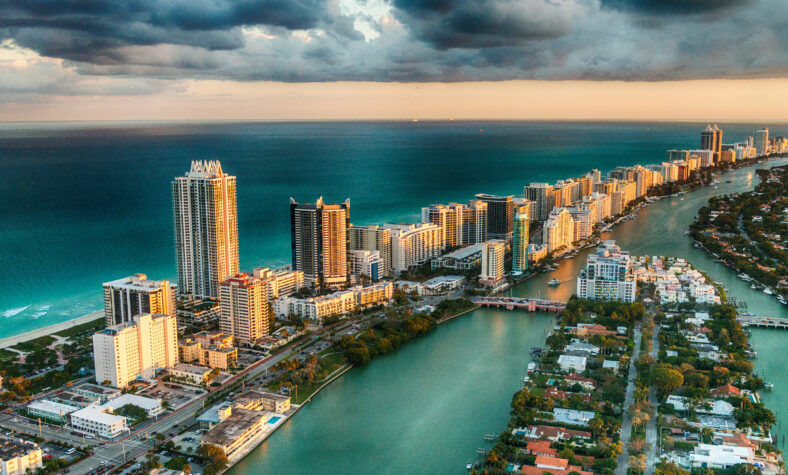Luxury Condos And Hotels Along Florida’s Southeast Coast Are Sinking

Many of the tall, heavy buildings along the coast of southeast Florida, including hotels and luxury condos, are sinking into the grounds at rates much faster than expected.
A team of specialists from multiple institutions in the United States and Germany compared satellite images taken over several years to learn more about how and why the ground has been gradually caving in along beachfronts.
The study found that 35 buildings from Golden Beach to Miami Beach sank as much as three inches between 2016 and 2023. The sinking structures accommodate tens of thousands of residents and tourists.
According to the researchers, the main cause of the sinking was vibrations from construction. As a result, soil particles can compact and settle, leading to subsidence—the gradual sinking of an area of land.
Subsidence can be caused by human activities (fracking, landscaping, and the heaviness of buildings) and natural processes (gravity, earthquakes, and water movement).
In the new study, the research team noticed that many of the tall buildings along the South Florida coast appeared to be extremely heavy. They wondered if the weight could be the reason that the ground beneath them was sinking.
It was normal for the buildings to move during or immediately after their construction because of their heaviness. But it was a surprise for the researchers to learn that the movement actually continues for years after.
The team began the study in 2021, when the Champlain Towers collapsed in Surfside, Florida. No signs of subsidence were detected in the area before the collapse, but evidence of it was found at nearby beachfront structures and along the coastline.
Based on their measurements, almost 70 percent of buildings are sinking in northern and central Sunny Isles Beach. About 23 percent of those structures were built just within the past decade.

Sign up for Chip Chick’s newsletter and get stories like this delivered to your inbox.
Construction vibrations also aren’t the only contributing factor to the sinking. Every day, the tides move water toward and away from the shore, shifting the ground and causing the above buildings to sink.
In addition, seismic activity or soil compaction can lead to sinking. They can occur naturally through the accumulation of sediment over time or from heavy buildings pressing down on the ground.
Miami is in danger of both land subsidence and rising sea levels due to climate change, making the city more vulnerable to coastal flooding, erosion, and storm surge.
Land subsidence worsens severe flooding as sea levels rise. In the area, sea levels are increasing at a rate of about 2.6 inches per decade over the past 30 years.
At the locations in the study, the buildings are sinking as quickly as the ocean is rising, which works to double the rate of sea level rise. Researchers will continue tracking the stability of coastal buildings and take action before disaster strikes.
The study was published in Earth and Space Science.
More About:News